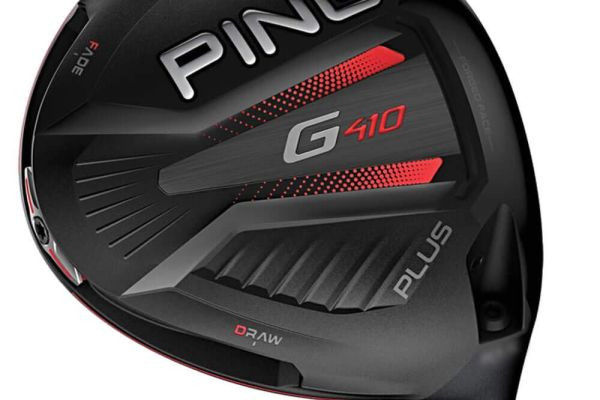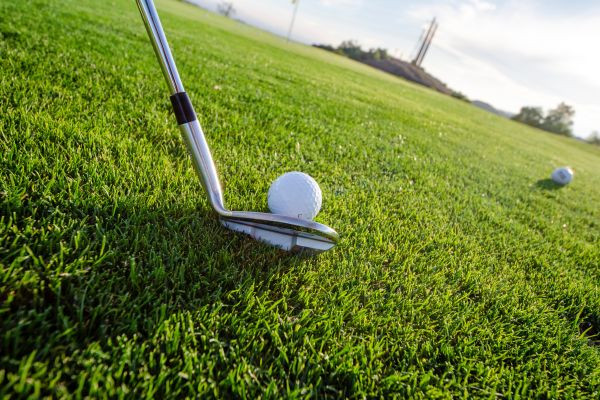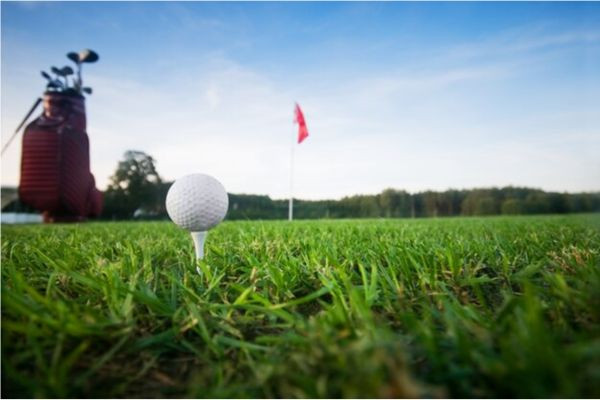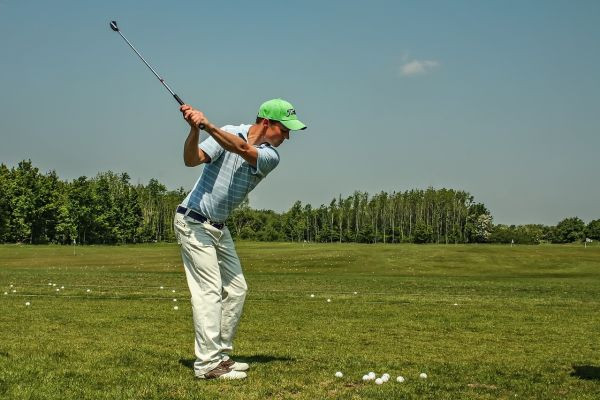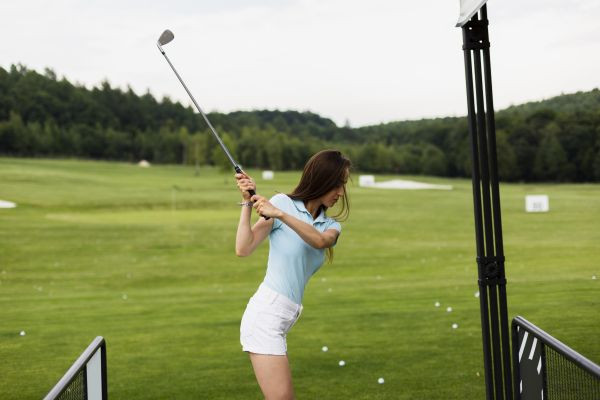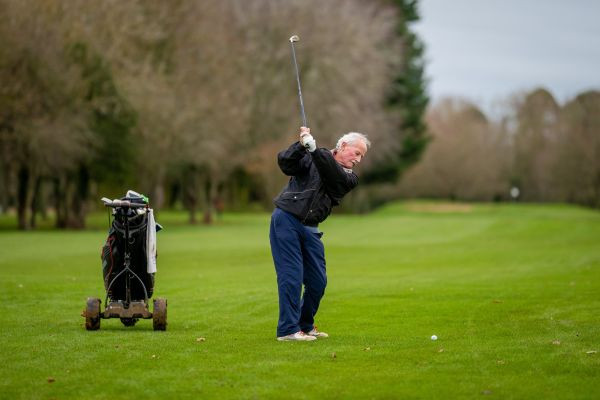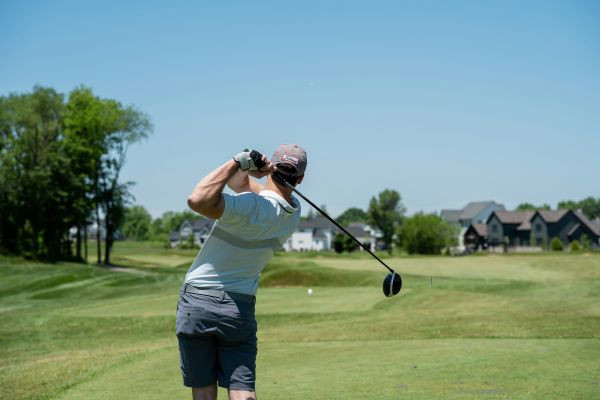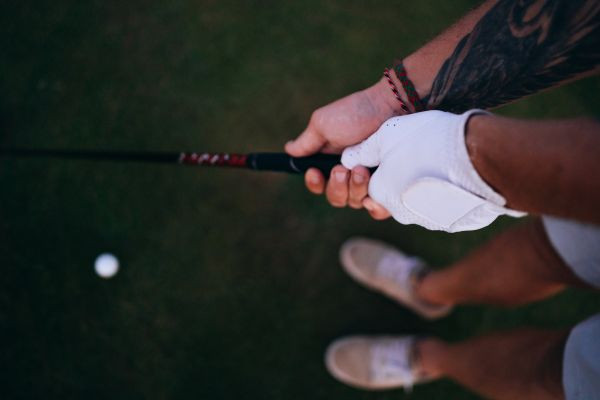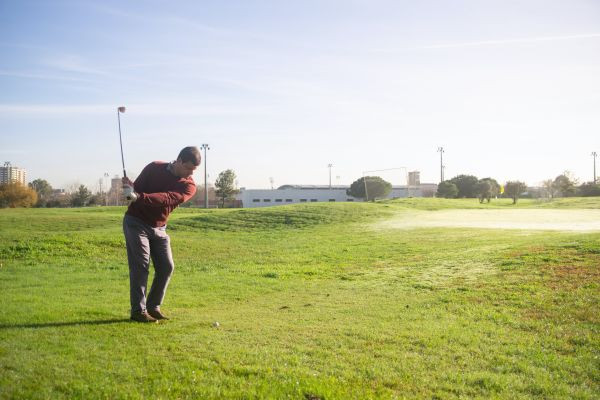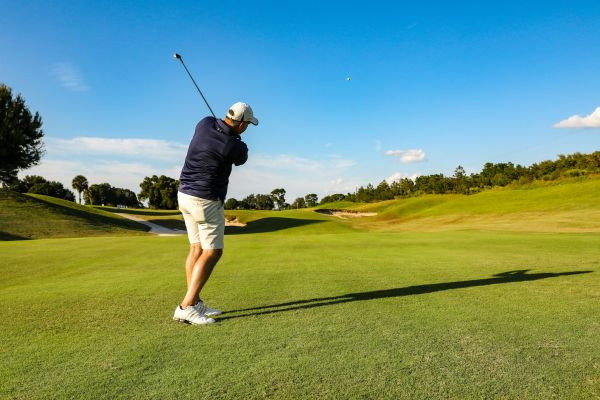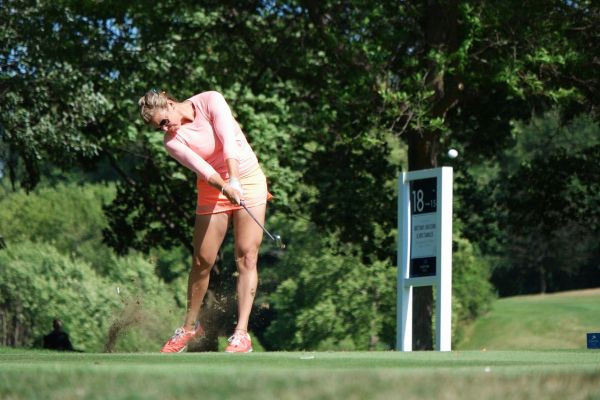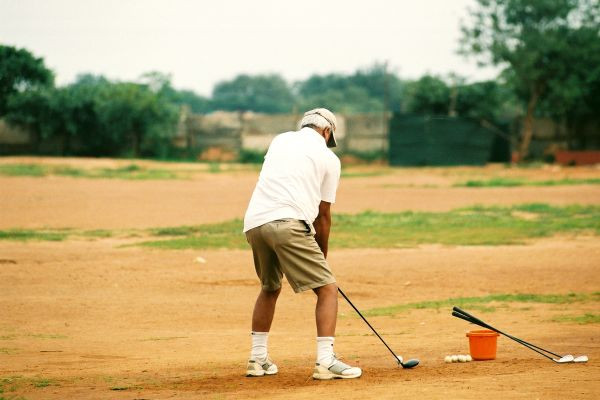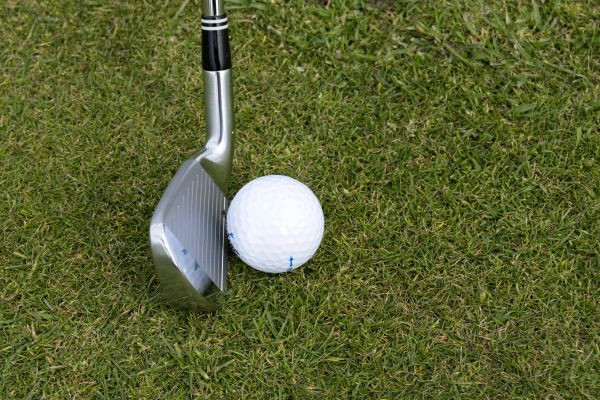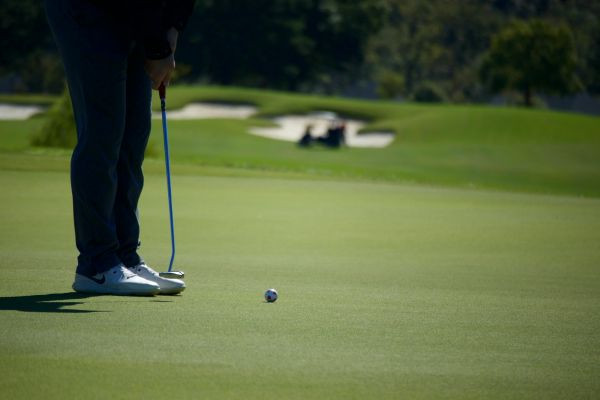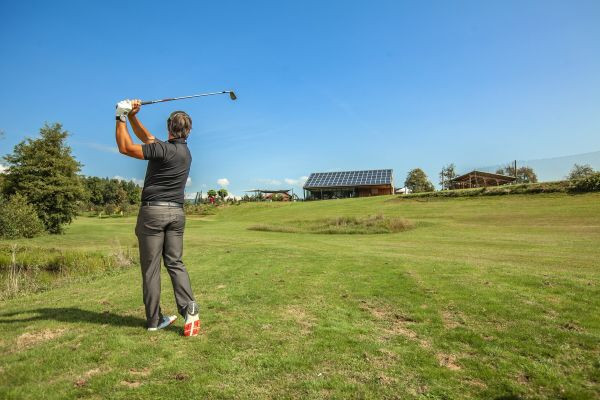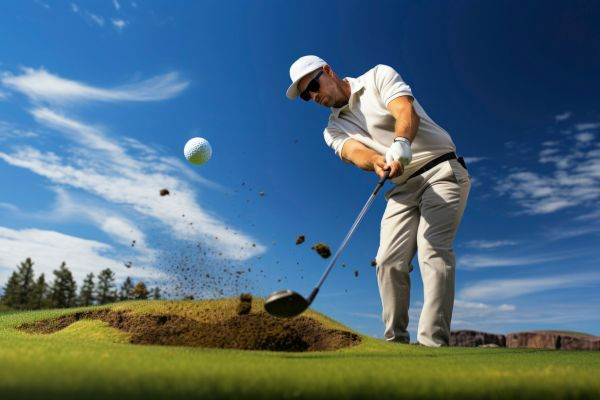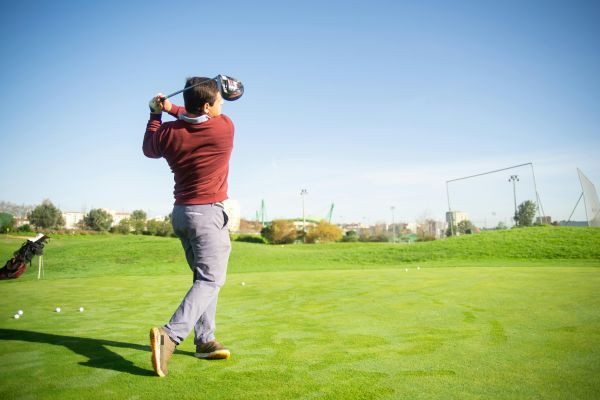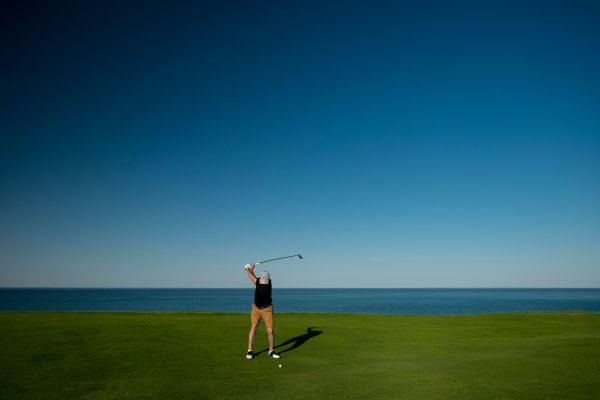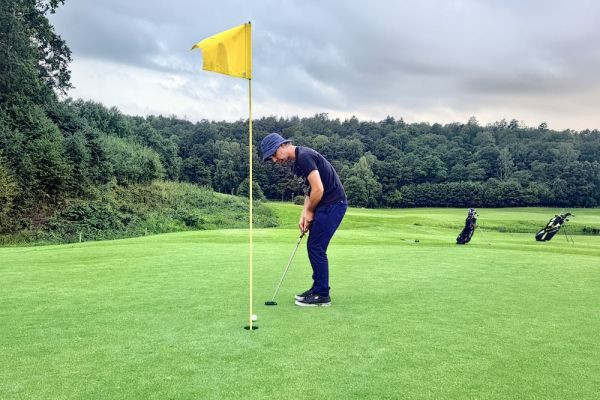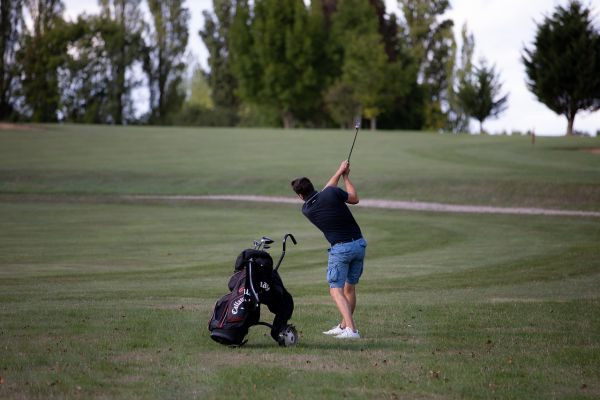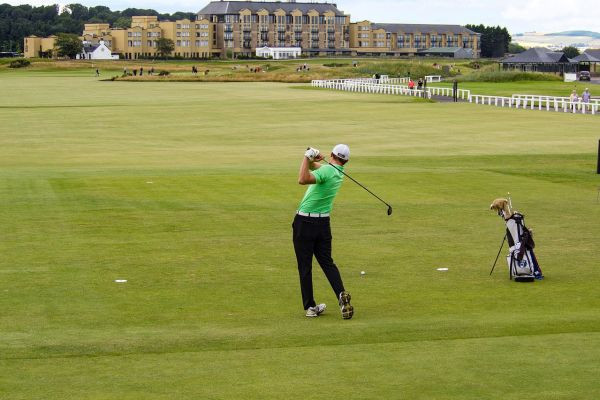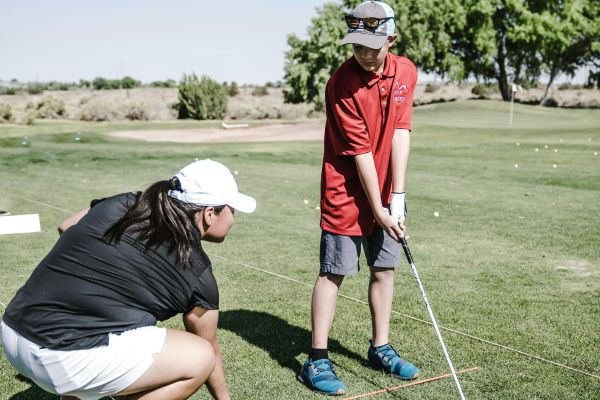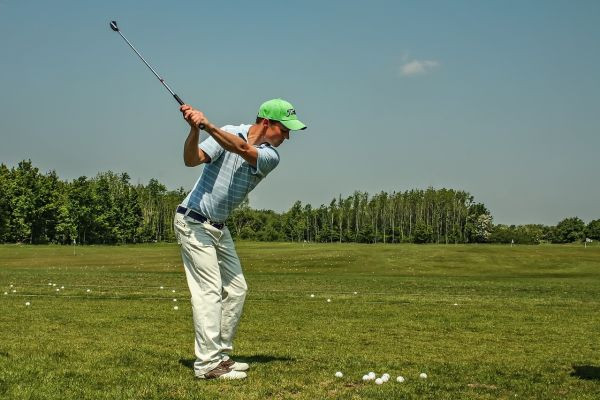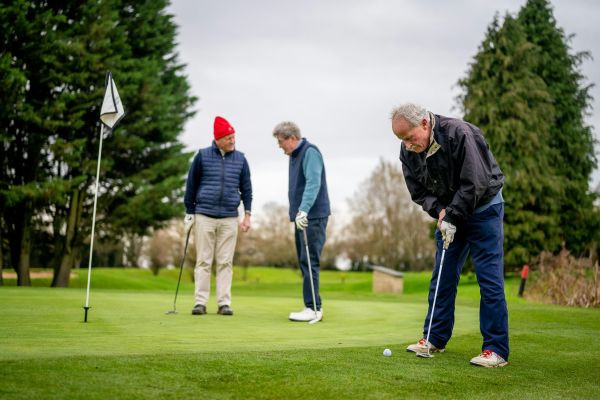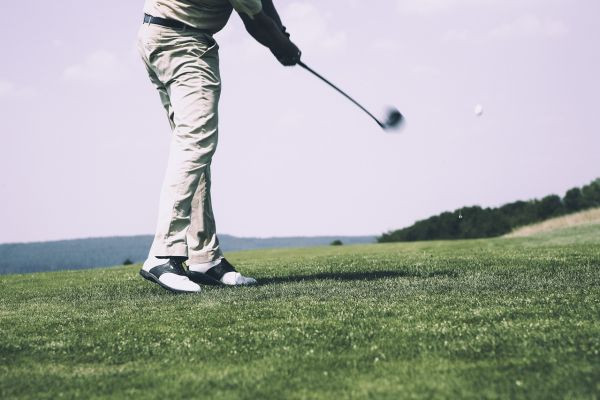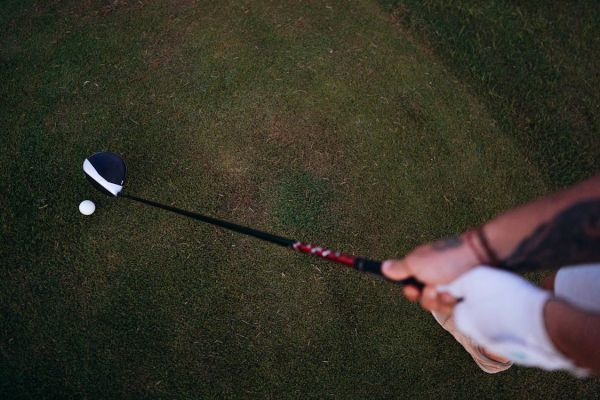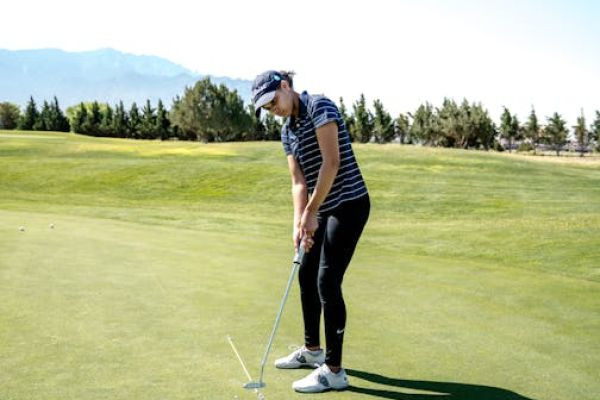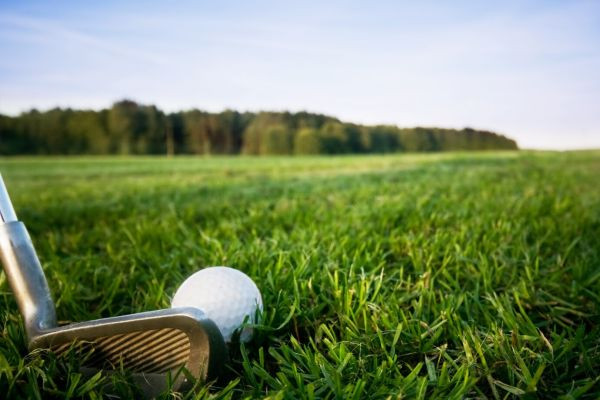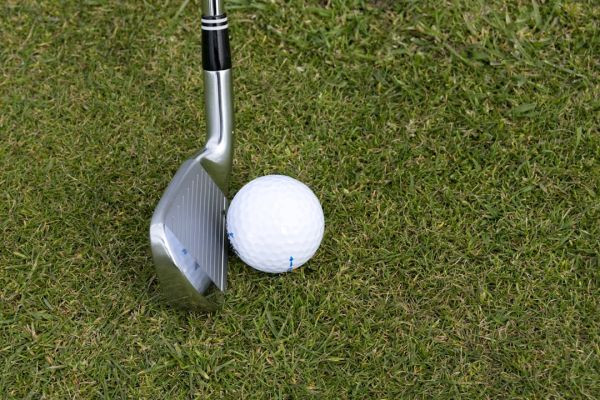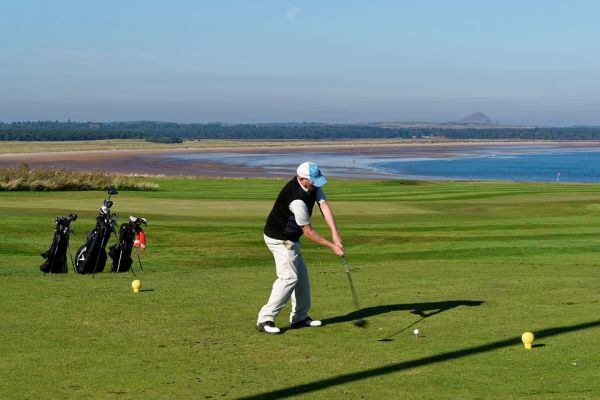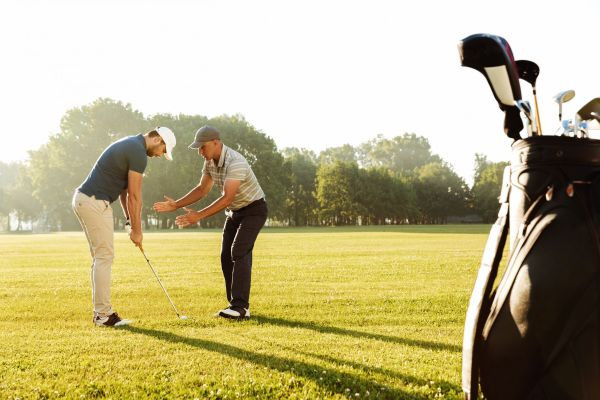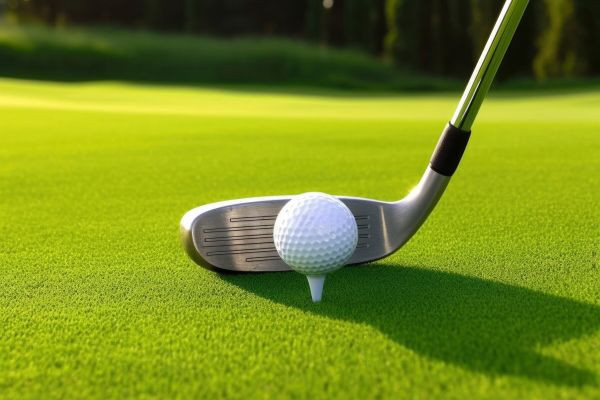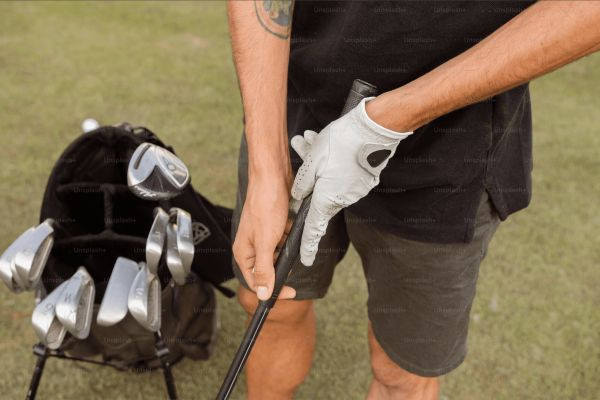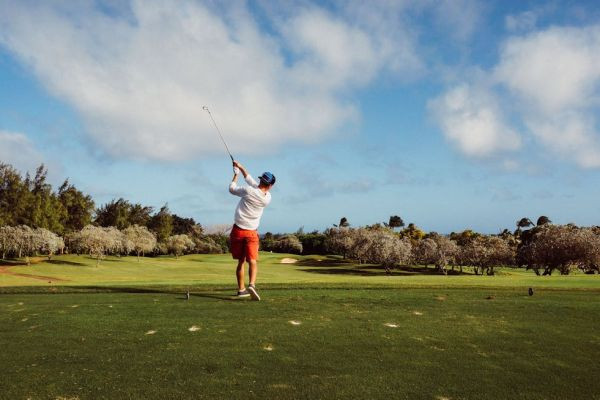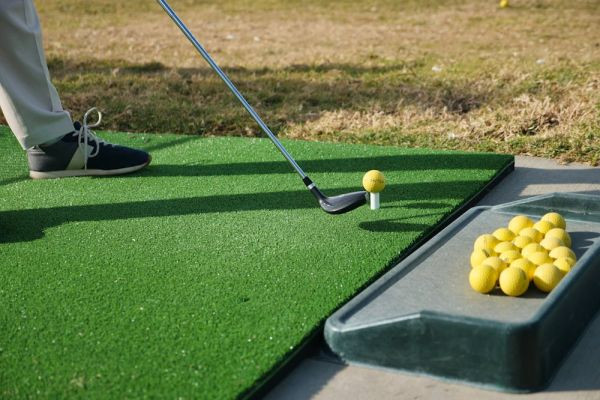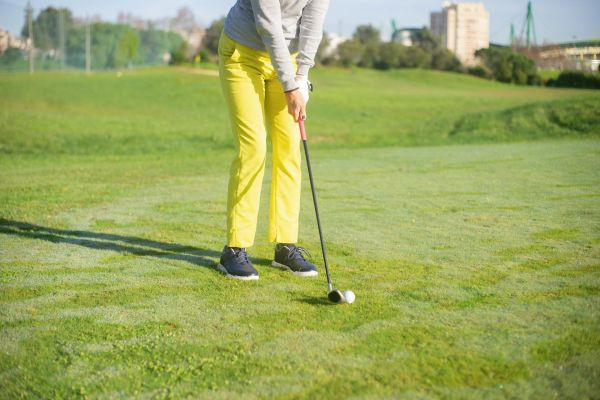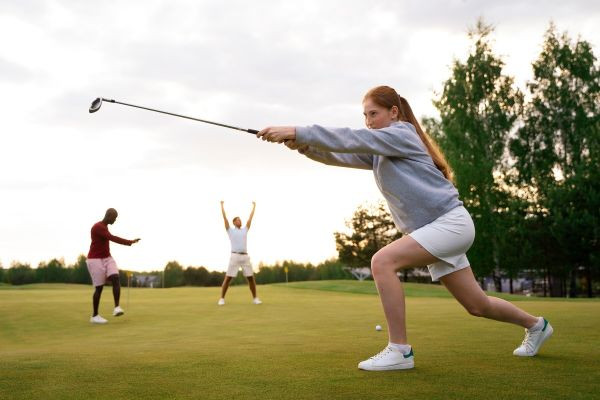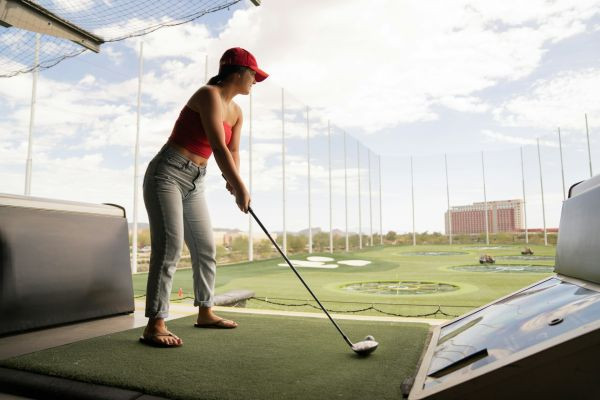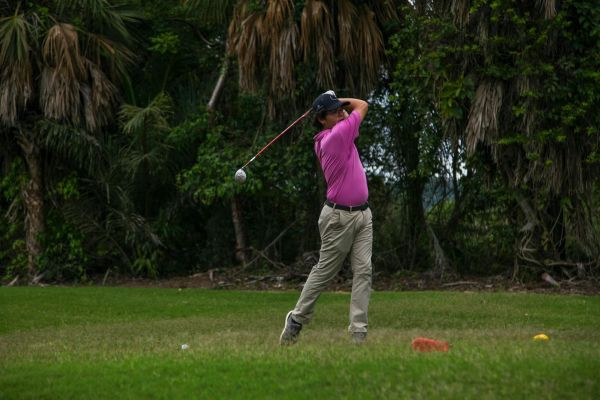Why Minimizing Right-Hand Pressure Can Improve Your Golf Game
Golf, a game of finesse and skill, demands not just physical strength but also a keen understanding of how every small action affects your play. One such subtle yet crucial aspect is the pressure appl..
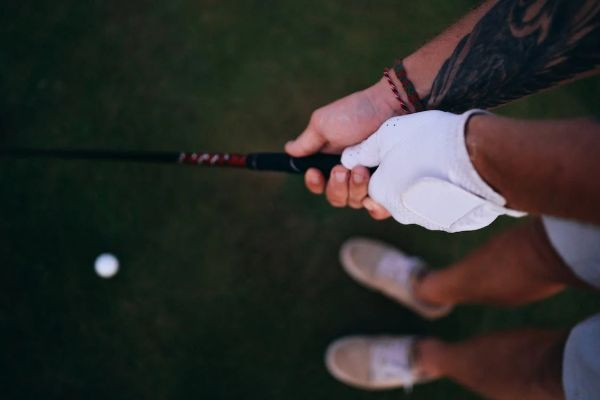
Golf, a game of finesse and skill, demands not just physical strength but also a keen understanding of how every small action affects your play. One such subtle yet crucial aspect is the pressure applied by the right hand during a golf swing. This article dives into why minimizing right-hand pressure can significantly improve your golf game.
The Mechanics of a Golf Swing
The Role of the Right Hand
The right hand in a golf swing, especially for right-handed golfers, is not just a supporting player; it's a key performer in the intricate ballet of a golf swing. This hand, when used correctly, can add finesse, power and precision. But when misapplied, it can be the source of numerous swing faults.
In the downswing, the right hand should act more like a guide than a dictator. Its main role is to support the left hand (for right-handed golfers), helping to maintain the correct club angle and ensuring a smooth, fluid motion through the ball. It's about finesse, not force. The right hand should feel light and responsive, allowing the clubhead to whip through the impact zone with speed and accuracy.
The Downswing Dynamics
Understanding downswing dynamics is crucial for any golfer. As the club moves down towards the ball, the right hand should work in harmony with the body's rotation. This coordination ensures that the clubhead follows the correct path and approaches the ball with the ideal angle and speed.
It's in the transition from backswing to downswing where the right hand's influence is most critical. A gentle guiding pressure is all that's needed. Too much pressure can cause the club to move off-plane or change the angle of the clubface at impact, leading to a variety of poor shots.
Common Mistakes with Right-Hand Pressure
Applying too much pressure with the right hand can have several detrimental effects on the swing:
Reduced Club Speed: A grip pressure that is too strong often restricts the club's natural ability to flow and whip. This consequently slows down the clubhead when it comes in contact with the ball, thereby reducing the speed and distance the ball covers.
Impaired Swing Mechanics: Overworking of the right hand can cause a breakdown in the mechanics of the swing. It leads to excessive domination of the upper body over the swing process.
Loss of Precision and Control: A right-hand that is too active causes several shots to be off-center, i.e., away from the target. These off-target shots tend to curve either slicing to the right or hooking to the left.
Increased Tension: Maintaining an over gripping of the right hand pressure often leads to excessive tension being built up in the arm and the shoulder. This tension is detrimental for both your fast and accurate shots and it also leads to muscle fatigue and injuries over time.
Benefits of Minimizing Right-Hand Pressure
Enhanced Club Speed:
Club speed is one of the biggest benefits to minimizing pressure with the right hand. This effect occurs because a lighter grip creates more freedom of movement with the club. The wrists can take a better hinge and unhinge, adding more of a 'whip' effect at the point of impact. The club will hit the ball a lot harder, which results in longer drives and more distance on your shots.
Improved Swing Precision:
A relaxed right hand provides better control in your club's path and face angle. Having more control over these aspects is why having a relaxed right hand is so crucial for accuracy. By not gripping your club so hard, you allow the clubhead and hands to align more naturally, which equates to straighter shots. Hitting the ball straight from the tee or the fairway allows you to hit your target much more easily.
Increased Consistency:
Consistency is everything in golf. With too much pressure within your right-hand grip, each swing can be different. When your right hand is holding the club lighter, then your swing will be much more consistent from swing to swing.
Reduced Risk of Injury:
Too much pressure in the right hand can also lead to problems, which can eventually affect your overall game. A lighter grip improves your swing and reduces the tenseness in your hands, wrists and forearms, which in turn reduces the strain put on these areas. Too much pressure can lead to 'golfer's elbow' and tendonitis in the wrists.
Better Energy Transfer:
A tense right hand can absorb some of the energy intended for the ball in your swing. But having a relaxed grip in your right hand increases this energy transfer in your swing.
Enhanced Feel and Feedback:
A lighter right-hand grip helps you feel your shot a lot better. It helps you to feel the club head position better throughout the swing and give you a sense of feedback from the hit. This feel helps you to make quick adjustments in your game easier.
Facilitates Proper Wrist Hinge:
Hinging and unhinging the club properly play a major role in a powerful golf swing. Loosening up the pressure on the right hand allows your wrist to hinge and unhinge, so the downswing can be more powerful and have a fuller follow-through.
Adapts Better to Different Shots:
A looser right-hand grip is much better whilst making different kinds of shots. Be it a long drive, an accurate iron shot, or a soft chip, using a lighter grip means you can adjust your swing easier to make the appropriate shot.
Techniques for Reducing Right-Hand Pressure

Source:https://www.pexels.com/photo/a-golfer-holding-a-golf-club-driver-9207654/
When it comes to reducing right-hand pressure in your golf swing there are several techniques you can employ. These techniques are not just about changing how you hold the club but also about rethinking the way your body moves during the swing.
Grip Adjustments
The journey to a better golf swing begins with how you grip the club. The grip is your only physical connection to the club and it plays a monumental role in how the swing unfolds. To minimize right-hand pressure the grip needs to be firm enough to maintain control but relaxed enough to allow for fluid motion. A helpful way to think about this is to imagine holding a small bird in your hand - you want to hold it firmly enough so it doesn't fly away but not so tightly that it's harmed. This approach ensures that the club is an extension of your body moving naturally and responsively as you swing.
Body Mechanics in Swing
Another crucial aspect is understanding and optimizing body mechanics during the swing. The power in a golf swing comes primarily from the body, not the arms. This means focusing on how your body rotates, how you transfer your weight and how you maintain balance throughout the swing. By doing this you're relying less on hand strength and more on the larger muscle groups of the body. When your body mechanics are sound the right-hand naturally applies less pressure as it's no longer the primary source of power.
Practical Drills to Practice
It is important to practice drills to help integrate the techniques into your golfing and to ensure the right motions and sensations remain fresh.
Drill 1: The Left-Hand Focus
A valuable exercise to incorporate these techniques into your golfing is to concentrate solely on your lead hand. For those who golf right-handed, this means giving exclusive attention to your left hand. Practice swings using only your left hand, a method that not only strengthens this hand but also minimizes the dominance of your right hand. Such practice will soon yield noticeable improvements in your swing, making it more fluid.
Over time, you can adjust this approach to ensure that your right hand effectively supports and enhances the lead hand's movements. This drill will also enhance your understanding of the club head's movement throughout your swing, contributing to a more refined technique.
Drill 2: The Release Technique
Another drill involves practicing the release technique. This can be done by consciously focusing on releasing the club with the right hand in the downswing. This release should feel natural and not forced. The idea is to feel the clubhead whipping through the impact zone, which is facilitated by a lighter right-hand grip. This drill helps in understanding how to effectively use hand pressure to control the club without overpowering it.
Analyzing the Impact
It is vital to understand the impact that minimizing right-hand pressure can/will have on your golf game. Reducing pressure in golf leads to a natural and fluid swing motion. By doing this, the swing will become more consistent due to avoiding over-control of the shot that is caused by overusing your right-hand pressure.
The consistency of your swing is one thing you need in golf. It is what helps predict where the ball will go once you hit it. Moreover, this leads to better control, hitting the ball squarely and in the proper direction, leading to accurate, long drives and chips.
Ultimately, these improvements contribute to a lower golf score, as they translate into fewer strokes taken on the course.
Final Thoughts
Keep in mind that this journey is not only about adjusting your grip on the club; it represents a complete modification to the way you play the game. Although these tips look simple, applying them to your swing will make you a better player. Like many tips, these might take some trial and error to master, so do not give up too early on using this technique. It might take a little while to feel comfortable using less right-hand pressure, but in the end, the reward is well worth it.
Frequently Asked Questions (Faqs)
Why is minimizing right-hand pressure important in a golf swing?
Minimizing the pressure in the right hand helps is important because it helps you in achieving a smoother and more natural swing. By using a slower right-hand swing, the golfers can increase the consistency, control and clubhead speed in their swing. Following this approach helps in reducing the right-hand pressure and ends up having a better overall performance. The golfers can shoot longer and straighter shots using reduced right hand pressure.
Can reducing right-hand pressure really improve my golf game?
Yes, the golf player can improve a lot by reducing the right-hand pressure. The reduced right-hand pressure helps in improving a golfer's swing by making it smoother and more controlled. By reducing the pressure in the right hand, the golfers can achieve better shot accuracy and the ball speed can increase too. A great number of golfers find their games improve in many aspects making the game more enjoyable and increase their ability to perform better.
How can I tell if I'm applying too much pressure with my right hand?
To analyze how much pressure is being applied on the right hand the golfer can watch their swing and the flight of the ball. If the golf shot has less control, with shots all over the place and not hitting or reaching the average accurate distance, then too much pressure is being applied on the right hand. To examine if the right hand is applying more pressure then the golfer can feel tired, fatigued or mild pain in the right forearm and in their right-hand after playing the golf match.
Does this technique apply to left-handed golfers as well?
The same technique applies to the left-hand golf players but works in the reverse. By reducing the pressure of the dominant hand, you can improve its performance.
Will I lose power in my swing by reducing right-hand pressure?
On the contrary, reducing right-hand pressure can actually increase the power of your swing. Golfers can hit longer and more controlled shots if they grip a club less tightly. There are a number of reasons why the players can hit straighter if the players grip a club less tightly.


